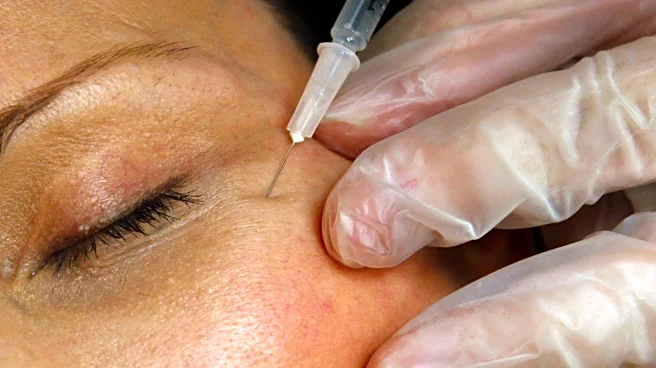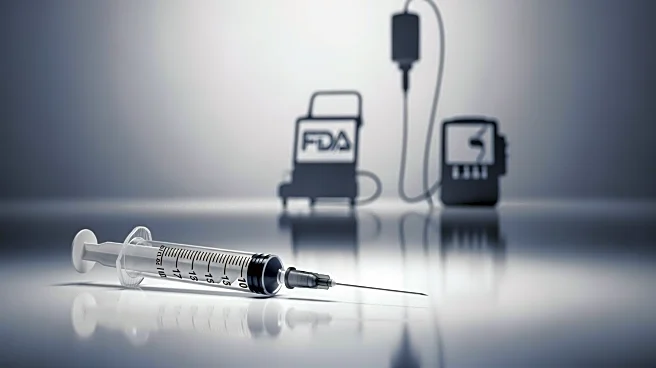What's Happening?
Researchers from Taipei Medical University have developed a new gluten detection device named LEO, which stands for Lateral flow Enhanced by Optical imaging. This device is designed to help individuals
with celiac disease and gluten sensitivities quickly and accurately screen foods for gluten content. The LEO system uses a lateral-flow strip and a smartphone app to detect gluten levels as low as 5 parts per million (ppm) with 98% accuracy, surpassing the Food and Drug Administration's labeling threshold. The device can identify cross-contamination in restaurant foods labeled as 'gluten-free,' providing a visual result in about two minutes. The test involves placing a small food sample into a vial, adding liquid, and using a test strip to detect gliadin, the gluten protein that triggers reactions in individuals with celiac disease.
Why It's Important?
The development of the LEO gluten test is significant for the estimated 1% of the U.S. population with celiac disease and an additional 6% with gluten sensitivities. Celiac disease can lead to severe health issues, including gastrointestinal symptoms, poor growth, anemia, osteoporosis, and even lymphoma. The ability to accurately test for gluten in foods can help these individuals avoid adverse health effects and improve their quality of life. The device's affordability and ease of use make it accessible to a wide audience, potentially reducing the risk of gluten exposure and cross-contamination in everyday meals. Furthermore, the technology could be adapted to detect other common food allergens, broadening its impact on food safety.
What's Next?
The LEO device is already available for purchase, with plans to reduce its cost further. The research team aims to expand the device's capabilities to test for other food allergens, such as peanuts, shellfish, and dairy, which would enhance its utility for individuals with various food sensitivities. As the device gains popularity, it may influence restaurant practices and food labeling standards, encouraging more accurate gluten-free claims and reducing cross-contamination risks. The ongoing development and adaptation of the LEO system could lead to broader applications in food safety and allergen detection.
Beyond the Headlines
The introduction of the LEO gluten test highlights the growing demand for personalized health solutions and the role of technology in addressing dietary restrictions. It underscores the importance of scientific innovation in improving public health and safety, particularly for those with specific dietary needs. The device's potential to adapt for other allergens could lead to a shift in how food safety is approached, promoting greater transparency and accountability in food preparation and labeling.













